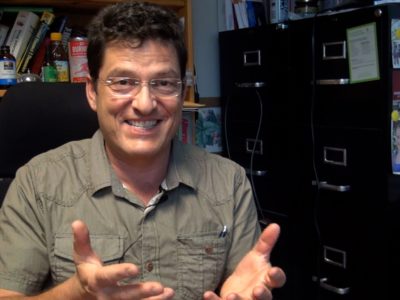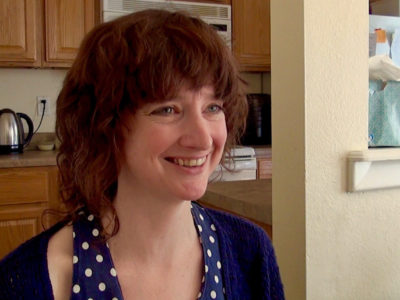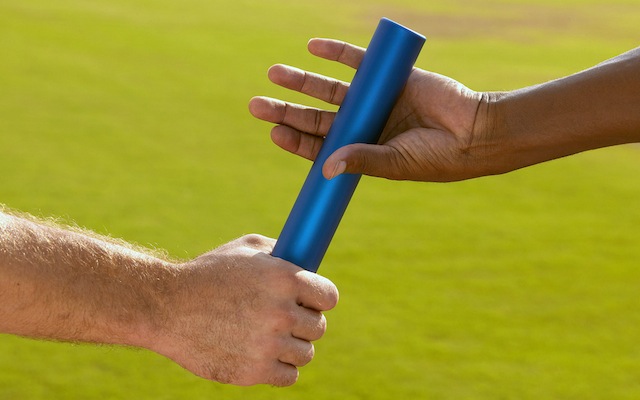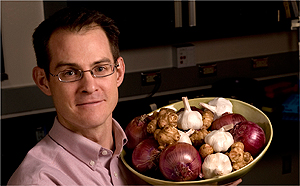It’s supposed to be impossible to reverse Type 1 diabetes, which is a form of diabetes where the Beta cells in the pancreas, which produce insulin, are basically stressed to death or at least, into paralysis. All this means a Type 1 diabetic loses the ability to produce life-giving insulin. A Type 1 diabetic must survive by injecting insulin for the rest of his/her life. At least, that’s the conventional view. And while it MIGHT be true, what about exceptions?
Michelle is a college student who was first diagnosed as a Type 1 Diabetic in May 2008. She tracked changes in her Type 1 Diabetes symptoms after switching to a diet that’s much different from how most Americans eat, and also a huge change from how the American Diabetes Association tells diabetics to eat. For roughly 2 years, Michelle said it was still touch-and-go, how she’s doing, but overall, she’s much, much better than when she was first diagnosed. Naysayers would say that Michelle is in a honeymoon period, where things get better for a Type 1 diabetic before they get worse. But that “honeymoon” period usually lasts less than a year, and it’s nearly 2 years since Michelle was first diagnosed.
However, in March 2010, she posted a blog report that she was back on insulin, with this report:
I’m back on insulin and I quit the paleo diet.
I’m back…
Sorry everyone for the lack of blogging, but this is probably my last one.
I’m back on insulin and I quit the paleo diet.
In that blog post, she explains that for her, compliance was too challenging, and while it may have helped extend her honeymoon period away from insulin, she didn’t think that in the long run, paleo worked successfully for her . . . although she does still try to keep her diet lower in carbs than the average American, it seems . . .
In Michelle’s case, she cut back enormously on foods that turn into sugar in her body, and she worked to avoid inflammatory triggers such as grains and dairy. She was basically following Loren Cordain’s Paleo diet. Thanks to Loren for passing this on. To learn more, visit Michelle’s website.







Hi, Genevieve,
I like Victoria’s book, Raw Food Family also, though when I’ve talked with Victoria, it’s never been clear to me whether any doctor ever did any test to confirm the idea that the malady in her family was Type 1 diabetes or if it was the more common kind of diabetes, which is insulin resistance. All too often, doctors faced with someone with high blood sugars will automatically assume they’re a Type 1 diabetic, that is – the medical expert will assume the person’s pancreas has basically stopped producing insulin, and the person needs to have insulin injected. But there’s no way to know if this is true without first checking to see how much insulin a person’s body produces on its own, after a food challenge. Medical experts often skip this fact-finding check and go straight to prescribing more insulin to be injected. If someone has insulin resistance, it may be that their body is producing plenty of insulin on its own, but that their cells are already overwhelmed by sugars and want to avoid taking in more, or some other reason that leads the cells to “resist” the insulin signal. In this case, adding more insulin in the short term can reduce sugar levels, but it can lead to a huge number of long term problems, ranging from weight gain to high blood pressure to heart disease to chronic other diseases that the medical experts on this site speak about eloquently. When an insulin resitent person in this situation finally switches to a very low carbohydrate diet, it often happens that their health problems start to melt away and they find their need for the injected insulin starts to go away as well – and NEEDS to, since the injected insulin starts to drive their blood sugars too low. Some people who stick to eating lower carb/high fat eventually discover they don’t need any injected insulin at all. Their own body supplies can fill the bill. Yay! For someone like that, all the injected insulin could have been skipped if only their doctors had first checked their internal “endogenous” insulin levels through a food challenge (fasting insulin really isn’t a clear enough marker for many people, since it doesn’t show response to carbs). And then, of course, they’d need to have someone counselling them to avoid high carb diets such as the American Diabetes Association protocols, and find something that fits their body’s needs better. People such as Ron Rosedale, Eric Westmen, Jeff Volek, and Steve Phinney do a great job explaining high-fat, low carb, adequate protein diets. Lots of good books and info about them and their ideas, including interviews at this site.
As for Victoria, my hunch is that her “carb intolerance” was not hugely extreme, and switching to her raw food diet reduced carbs enough to help everyone in her family be much much healthier. Plus all the great nutrients from those whole raw foods was helpful as well. Many vegan diet protocols are very high in carbs, but Victoria’s approach is more balanced. However, it may be too high in carbs for someone with more carb intolerance than she had, and also too high for a person with very little internal production of insulin.
Last but not least, not sure where you have gotten the information that it’s hard to convert animal protein into usable protein in the human body. Most experts, and most science, looks at it the other way around – that animal protein is one of the easiest proteins to convert into usable forms in the human body. Interestingly, a growing number of high carb/high fat, adequate protein experts are suggesting that it’s healthier NOT to have too much protein, whether animal or vegetable. Since vegan proteins are a bit more challenging for the body to assemble into usable full proteins (doable of course, but more challenging) it may be that a well-balanced vegan diet has the advantage of not overwhelming the body with too MUCH protein. That’s possible to do with animal proteins, also, by still eating animal proteins, but eating less of them. Either way works, and here’s to whichever healthy method you prefer.
Diabetics have big problems when they consume animal products. It takes an enormous amount of energy to convert animal protein into protein that can be assimilated by the human body. Meat puts an huge strain on your whole system, especially your liver.
there are people who have reversed type 1 diabetes on a vegan, raw food diet. See Victoria Boutenko’s raw food books.
Thank you for your comments, and for your observations about how you are attentive to your health. — Shelley
Michelle,
Progress in this area is yet new. Everyone seems to reach for a diet that is ‘perfect’ for the masses. We are so individuated, captivated by our point in time, and physical progression that such an expectation is unreasonable. We are where we are……some factors remain strong enough to demand our attention….we mitigate where possible……..denial is foolish….Paleo offers a frame of reference that if we had it at birth, we would not need other assistance..but, we do have serious issues now….do what you need to do to keep your numbers friendly…borrow from Paleo what you can. It will minimize your reliance on insulin more than other plans. I suspect, you, like me, will need to keep carbs seriously low. For me, more than 18g per meal triggers an unfriendly response. I try to keep my daily down to 30-40g or less per day. No, I’m not an adkins advocate…I watch the fats with a close eye. I’m not big, 5’7 110 lbs so it is not about weight, it is about life and how I want to live it. If you track your response to your intake it may help you make refinements. Persevere. It is worth it. Sorry Paleo was not the answer you were looking for…but maybe it is part of the puzzle solution.